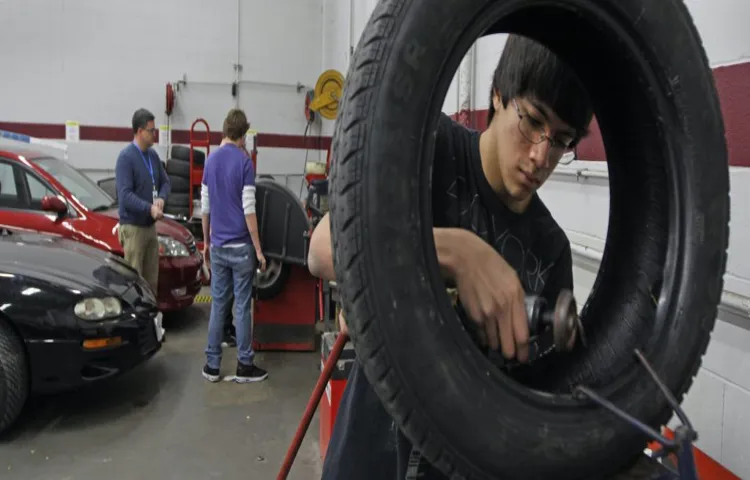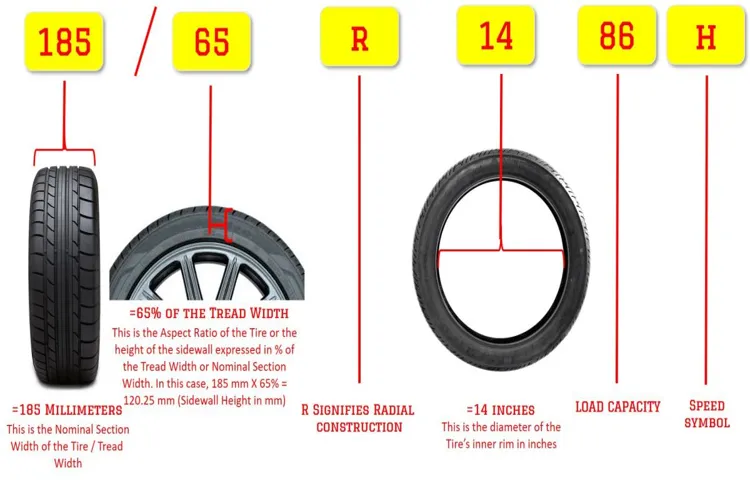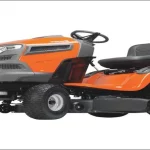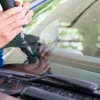Have you ever experienced a flat tire while driving? It can be a frustrating and scary situation, especially if you’re on a busy road or in the middle of nowhere. One of the main causes of a flat tire is a tire leak. While it may not always be noticeable, it’s important to know how to check for a tire leak before hitting the road.
In this article, we’ll go through the steps you can take to spot a tire leak before it leads to a flat tire. With a little bit of knowledge and awareness, you can avoid the headache and danger of a flat tire on the road.
Table of Contents
Visual Inspection
If you suspect that your tire has a leak, there are a few ways you can check it visually before taking it to a professional. First, inspect the tire for any punctures, nails, or other objects that might be embedded in the rubber. These can cause slow leaks over time, and they’re relatively easy to spot if you look closely.
Additionally, check the valve stem to make sure it’s not loose or damaged. Finally, check the sidewall of the tire for any cracks or bulges, which could indicate a more serious issue. If you notice any of these signs, it’s best to have a professional take a closer look to determine the cause of the leak.
Remember, it’s always better to be safe than sorry when it comes to maintaining your vehicle’s safety on the road.
Look for Objects
When it comes to visual inspection, one of the most important things to consider is looking for objects. Whether you’re examining a product, a vehicle, or even a building, paying close attention to the objects within your field of view can help you identify potential problems or issues that may need addressing. By carefully examining each object, you can gain a more thorough understanding of the overall structure or design, which can help you identify any inconsistencies or weaknesses.
This is especially important in fields like manufacturing or construction, where small details can have a big impact on the overall quality and safety of a product or structure. So the next time you’re conducting a visual inspection, be sure to keep an eye out for objects – you never know what you might discover!

Inspect the Sidewall
The next time you’re checking out your tires, make sure to give the sidewall a close inspection too. The sidewall is the part of the tire that faces outward and is responsible for supporting the weight of your vehicle while also providing crucial information about the tire. You’ll notice that there are various grooves, patterns, and even lettering on the sidewall, each indicating different things like tire size, load capacity, and speed rating.
It’s important to check for any damages or anomalies such as cracks, bulges, or punctures, as these could be signs of a tire that is about to fail. If you do spot anything wrong with the sidewall, it’s best to replace the tire as soon as possible to prevent any accidents on the road. Remember, safety should always come first when it comes to driving.
Pressure Check
Have you ever felt like your car is pulling to one side, or noticed that your steering wheel shakes while driving? These could be signs of a tire leak! There are some simple ways to check if your tire has a leak. The first is to visually inspect the tire for any punctures or cuts in the tread or sidewall. If you see anything, it may be time for a tire repair or replacement.
Another method is to use a tire pressure gauge to check the pressure in your tires. If the pressure is consistently low, even after you’ve refilled it, there may be a slow leak in the tire. Finally, try the soap and water test.
Mix some dish soap and water in a spray bottle and spray it onto your tire. If you see bubbles forming, that’s a sign that there’s a leak. Don’t let a tire leak go unchecked, as it can cause damage to your tires and even lead to a blowout on the road.
Always address the issue as soon as possible to ensure your safety on the road.
Test the Pressure
Checking the pressure in your vehicle’s tires is a crucial part of overall maintenance and safety. Not only can it help prevent a potential flat tire or blowout, but it can also improve your gas mileage and extend the life of your tires. To check the pressure, first, you’ll need a tire pressure gauge.
This tool is inexpensive and can be found at almost any auto parts store. Simply remove the valve cap from the tire, press the gauge onto the valve stem, and take a reading. The recommended pressure for your particular vehicle can usually be found on a sticker inside the driver’s door or in your owner’s manual.
If the pressure is low, use an air compressor to fill it to the correct level. Remember to check all four tires, including the spare, and to check the pressure regularly. By taking a few minutes to test the pressure regularly, you can ensure a smoother and safer driving experience, all while saving money in the long run.
Compare to Manufacturer’s recommendations
When it comes to maintaining proper tire pressure, one crucial step is to compare the manufacturer’s recommendations with what you currently have. The manufacturer has specific guidelines for the ideal tire pressure based on the weight of the vehicle, the type of tires used, and other factors. Driving with improper tire pressure can negatively impact the performance and longevity of your tires, as well as your vehicle’s overall safety.
To ensure your tires are inflated to the correct pressure, start by checking the recommended levels in your vehicle manual or on the tire placard on the driver’s side door jamb. Utilize a tire gauge to check your current tire pressure, and inflate or deflate as needed to match the manufacturer’s guidelines. Regularly checking your tire pressure is an essential part of vehicle maintenance, so make it a habit to do so at least once a month or before long trips.
This simple step can go a long way in promoting your vehicle’s safety and performance on the road.
Repeat the Test
One of the most important steps in maintaining the proper functioning of your vehicle is by checking the pressure of your tires regularly. Not only does this ensure that your tires last longer, but it also improves fuel efficiency, enhances safety, and reduces the risk of a costly tire blowout. However, just checking it once is usually not enough.
It is essential to repeat the tire pressure test, especially if you have been driving long distances or through challenging terrain. Factors like temperature, humidity, elevation, and driving speed can all affect tire pressure readings. Therefore, it’s good practice to check it every month or so and always before a long trip.
Remember, having the correct tire pressure can significantly impact your car’s handling, braking, and fuel efficiency, so don’t skip this simple but essential step in maintaining your vehicle’s health.
Soap and Water Test
If you suspect that your tire has a leak, the soap and water test is one simple and effective way to confirm your suspicions. It involves applying a soapy water solution to your tire and looking for bubbles to form, indicating where air is escaping. To perform the test, mix dish soap and water, apply the solution to the tire, and watch for bubbles or a noticeable rush of air.
Start by checking the valve stem and work your way around the tire, keeping an eye out for any signs of leakage. The soap and water method is inexpensive and easy to do, making it a convenient option for anyone concerned about their tire’s safety. Remember to check your tires regularly, especially if you suspect a leak or puncture.
Taking action early can prevent further damage and ensure your safety on the road.
Mix the Soap and Water
When it comes to testing the effectiveness of our cleaning agents, the tried and true method of mixing soap and water prevails. It’s a simple process – just mix a small amount of soap with water until suds begin to form. The ratio of soap to water may vary depending on the type of soap you’re using, but a good rule of thumb is to start with a teaspoon of soap per cup of water.
Once the mixture is created, it’s time to put it to the test. Dip a cloth or sponge into the mixture and use it to clean a small area. If the surface comes out looking clean and shiny, then your cleaning agent of choice has passed the test! This soap and water test is not only easy to perform, but it’s also a cost-effective way to test the efficiency of cleaning agents.
So next time you’re looking to switch up your cleaning routine, remember to mix some soap and water and put it to the test.
Spray the tire
When it comes to testing for leaks in your tire, the soap and water test is a reliable method that can help you pinpoint the source of the problem. To start the test, mix up a solution of water and soap in a spray bottle. Next, spray the tire with the solution, paying close attention to the valve stem, bead, and any other areas that might be susceptible to leaks.
If there is a leak present, you will notice bubbles beginning to form. The size and location of the bubbles will help you identify the problem, such as a puncture or a faulty valve stem. By using this simple yet effective method, you can save yourself time and money by quickly identifying and fixing any leaks in your tires, ensuring a smooth and safe ride.
Observe bubbles-formed
The soap and water test is a simple and effective way to observe bubbles-formed. To perform this test, you will need some mild soap or detergent and a container of water. First, pour the water into a dish or bowl.
Then, add a few drops of soap or detergent. Swirl the water around to distribute the soap evenly. Next, dip a straw or a stick into the solution and blow gently.
You should see bubbles forming on the surface of the water. These bubbles are created by the soap molecules, which lower the surface tension of the water and allow air to be trapped inside the bubble. The soap and water test is a great way to teach kids about the basics of chemistry and the properties of liquids.
It’s also a fun activity that can be done at home with ingredients you likely already have on hand. So go ahead and give it a try!
Conclusion
In summary, there are a few ways to know if your tire has a leak. One is to listen for the sound of air escaping or feel for a change in the smoothness of the ride. Another is to check for visual cues, like bulges or punctures in the tire.
But the surest way to know is to trust your intuition, because if something feels off, it probably is. So whether you’re a seasoned driver or just starting out, always keep an eye (and an ear) on your tires – because when it comes to road safety, a little leak can lead to a big problem.”
FAQs
What are the signs of a tire leak?
Signs of a tire leak include a hissing sound, vibration, low or uneven tire pressure, and visible damage to the tire.
Can I visually identify tire damage that could cause a leak?
Yes, you can identify tire damage that could cause a leak by looking for cuts, punctures, cracks, or bulges on the tire surface.
Is it safe to drive on a tire with a leak?
No, it is not safe to drive on a tire with a leak as it can cause a blowout or loss of control of the vehicle.
How can I prevent tire leaks?
Regularly inspecting your tires for damage, maintaining proper tire pressure, avoiding potholes and other road hazards, and rotating your tires can help prevent tire leaks.
Can a tire leak be repaired?
Yes, a tire leak can be repaired if the damage is within the repairable limits and not in a critical area such as the sidewall.
How long does a tire repair usually take?
A tire repair usually takes about 30 minutes to an hour, depending on the severity of the damage and the availability of the necessary equipment.
Should I replace my tire or repair it if it has a leak?
It depends on the severity and location of the damage. If it is in a critical area or the tire is old and worn, it may be safer and more cost-effective to replace the tire. Otherwise, a repair can be a viable option.



